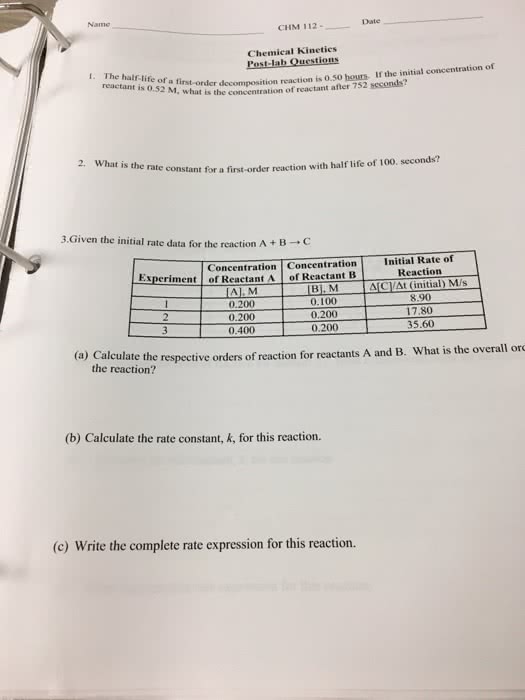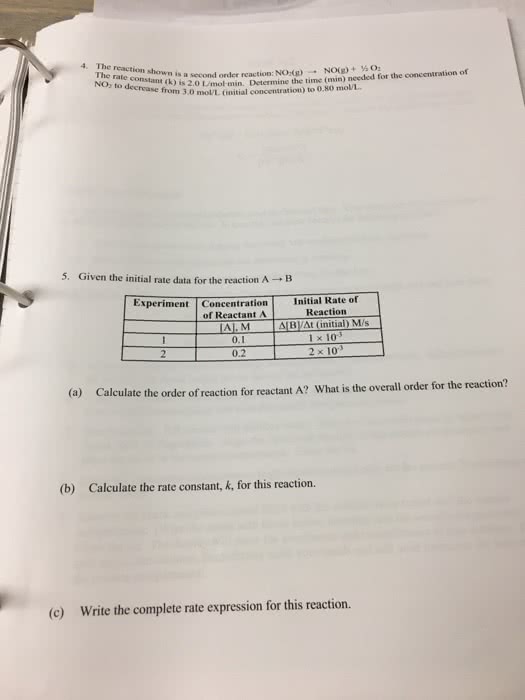A+B--> C rate= delta [C]/ delta t = k [A]^a[B]^b
a) Given the initial concentration of each of the reactants,calculate the final concentrations of A, B, and C. Assume thereaction goes to completion. [A]initial= 5.0 x 10^-7 M [B]initial=7.0 x 10^-4M [C]initial= 0
b) Which reagent is in large excess? Is it reasonable to say thatthe concentration of this reagent is a constant?
c) How might you rewrite the rate law to show that the rate of thereaction, run under the conditions given in question 2a, dependsupon the concentration of only one reactant?
d) The rate of the above reaction (using the initial reagentconcentrations given above) was studied monitoring theconcentration change of reactant A. A summary of the data obtainedfrom that study is given below. Based on these experiemntalresults, what is the order of the reaction with respect to thisreactant? Given this new info, rewrite the rate law derived inquestion 2c.
graph one: [reactant] vs. time is a graph of a downward slopingcurve, approaches zero as time goes on.
graph two: ln[reactant] vs. time is a graph of a less dramaticdownward sloping curve, approaches zero as time goes by
graph three: 1/[reactant] vs. time is a graph of a straight linewith a positive slope.
A+B--> C rate= delta [C]/ delta t = k [A]^a[B]^b
a) Given the initial concentration of each of the reactants,calculate the final concentrations of A, B, and C. Assume thereaction goes to completion. [A]initial= 5.0 x 10^-7 M [B]initial=7.0 x 10^-4M [C]initial= 0
b) Which reagent is in large excess? Is it reasonable to say thatthe concentration of this reagent is a constant?
c) How might you rewrite the rate law to show that the rate of thereaction, run under the conditions given in question 2a, dependsupon the concentration of only one reactant?
d) The rate of the above reaction (using the initial reagentconcentrations given above) was studied monitoring theconcentration change of reactant A. A summary of the data obtainedfrom that study is given below. Based on these experiemntalresults, what is the order of the reaction with respect to thisreactant? Given this new info, rewrite the rate law derived inquestion 2c.
graph one: [reactant] vs. time is a graph of a downward slopingcurve, approaches zero as time goes on.
graph two: ln[reactant] vs. time is a graph of a less dramaticdownward sloping curve, approaches zero as time goes by
graph three: 1/[reactant] vs. time is a graph of a straight linewith a positive slope.







